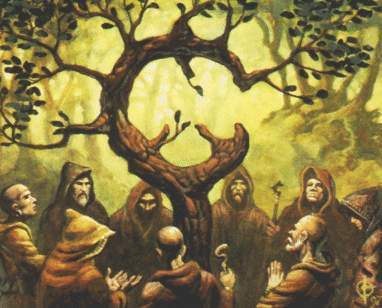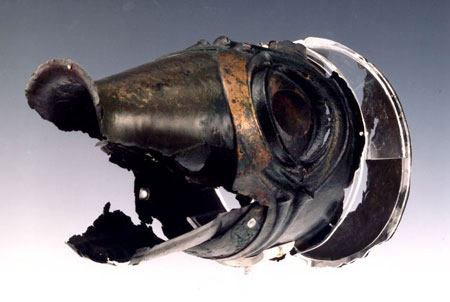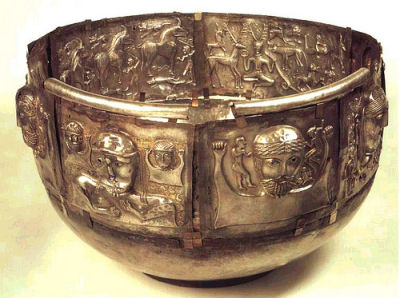The British Isles before Rome
Druids were also healers and teachers. They had a sort of Druidic university, where the old passed on their knowledge to the young. In times of war, a Druid would act as an ambassador. In times of peace, a Druid would remind people of the laws of their community and their culture. Some druids even composed verse. Some tribes had sacred animals or plants. Religious ceremonies were held outdoors, in clearings or woodland groves, and sometimes near sacred water sites, like springs or lakes or streams. Tributes to local deities were made in the form of burials (of, say, jewelry) and in the form of votive offerings (jewels and, in some cases, weapons deposited in bodies of water). Celts were particularly good at fighting. They adorned themselves in war gear, which, depending on the warrior, could include weapons such as swords or axes or picks or spears and the occasional shield, helmet, or breastplate. Celtic war paint was a regular sight. Julius Caesar had this to say: All the Britons indeed, dye themselves with woad, which occasions a bluish colour, and thereby have a more terrible appearance in fight. They wear their hair long, and have every part of their body shaved except their head and upper lip. Armor was expensive but was sometimes used. Also known is the tradition of Celts rushing into battle wearing no clothing at all. They were a varied lot, the Celts, and this extended to their appearance and adornment in battle. Celts were fond of hand-to-hand fighting. They also employed battle chariots, from which they would launch spears at their enemies until it was time to get down to the business of close-quarters combat.
One thing the Iron Age peoples of Britain didn't do a whole lot of was write things down. It just wasn't part of their culture. They learned by seeing and hearing and doing, not by reading and writing. The maxim of history being written by the victors is especially relevant in this case because the victorious Romans and later the victorious Saxons both brought with them a tradition of writing. WALES |
|



 Local tribes had local religions, with local religious leaders, known commonly as Druids. Echoes of Druidic influence can be found throughout British history, actually. Druids were more than just shaman, though. They had a patriarchal role in a community, and many of them were more revered than the political leaders to whom they provided advice.
Local tribes had local religions, with local religious leaders, known commonly as Druids. Echoes of Druidic influence can be found throughout British history, actually. Druids were more than just shaman, though. They had a patriarchal role in a community, and many of them were more revered than the political leaders to whom they provided advice.  The Celts were loud fighters, making war noises during their combat but also before, in an attempt to intimidate the enemy. The Celts admired the wild boar for its fierceness, and Iron Age Celtic warriors wielded a metal war trumpet, called a Carnyx, as a call to battle. Blowing in this trumpet produced a loud hoarse scream. The jointed jaws also moved. The effect would have been unnerving even for those who had seen it before. Some sources say that the Celts also played such horns on less violent occasions, like weddings and funerals and feasts and festivals. The Carynx was primarily known as a battle device, however.
The Celts were loud fighters, making war noises during their combat but also before, in an attempt to intimidate the enemy. The Celts admired the wild boar for its fierceness, and Iron Age Celtic warriors wielded a metal war trumpet, called a Carnyx, as a call to battle. Blowing in this trumpet produced a loud hoarse scream. The jointed jaws also moved. The effect would have been unnerving even for those who had seen it before. Some sources say that the Celts also played such horns on less violent occasions, like weddings and funerals and feasts and festivals. The Carynx was primarily known as a battle device, however. Some Celtic art survives, made of bronze, iron, stone, or gold. Celtic art included human or animal figures and pottery, such as cups and bowls. They produced their own coinage as well, of bronze and then iron and then silver and gold, using it among themselves and to pay for goods from elsewhere.
Some Celtic art survives, made of bronze, iron, stone, or gold. Celtic art included human or animal figures and pottery, such as cups and bowls. They produced their own coinage as well, of bronze and then iron and then silver and gold, using it among themselves and to pay for goods from elsewhere.
